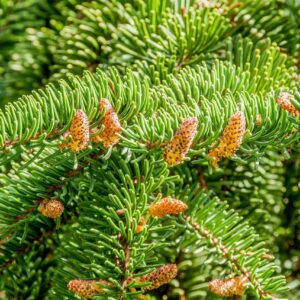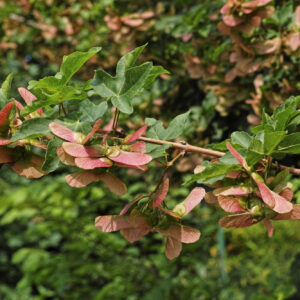Platanus orientalis Minaret
£280.00
SKU: PLAT8164-1
Categories: All Trees, All Trees & Plants, Deciduous Trees, Rootballed Trees
Tags: deciduous, flaking bark, hardy, London Plane, Minaret, Oriental Plane, Platanus orientalis, Rootballed trees
Frequently Bought Together

+

+

Total: £35.50
Description
Quick Facts
- Common Name: Minaret Oriental Plane, Columnar Plane Tree
- Botanical Name: Platanus orientalis ‘Minaret’
- Plant Type: Deciduous tree
- Mature Height: 12-15m
- Mature Spread: 3-4m
- Flowering Period: April to May
- Flower Colour: Inconspicuous greenish clusters
- Foliage: Large, deeply lobed palmate leaves, bright green turning golden-yellow in autumn
- Hardiness: RHS H6 (hardy)
- Soil Requirements: Moist, well-drained, tolerates most soil types
- Aspect: Full sun to partial shade
- Maintenance: Low to moderate
Description
Experience the architectural elegance of Platanus orientalis ‘Minaret’, an exceptional columnar plane tree that brings striking vertical presence and Mediterranean grandeur to English gardens where space is limited but impact is essential. This outstanding cultivar offers the majestic beauty of the ancient Oriental plane—magnificent deeply lobed leaves, attractive flaking bark, and robust character—all contained within a remarkably slender, upright form that rises like a minaret, making this perfect for narrow spaces, formal avenues, and contemporary landscapes where traditional spreading plane trees would be impractical.
Throughout spring and summer, this captivating tree displays its spectacular large palmate leaves that can reach 15-20cm across, each deeply divided into five to seven pointed lobes, creating bold architectural texture and dappled shade. The bright green foliage provides elegant presence throughout the growing season, rustling gently in breezes and creating movement in the canopy. As autumn arrives, the leaves transform into warm shades of golden-yellow and amber before falling to reveal the tree’s most distinctive feature—beautiful mottled bark that flakes away in irregular patches, creating a stunning mosaic of cream, grey, and olive-green tones that provides exceptional winter interest. Spherical seed balls dangle on long stalks, adding textural detail.
Named for its distinctive minaret-like columnar form, this remarkable cultivar brings the timeless beauty of one of the world’s most historic trees to modern gardens. The Oriental plane has been revered for millennia across the Mediterranean and Middle East for its longevity, beauty, and shade. Exceptionally hardy and adaptable, ‘Minaret’ thrives in British conditions, tolerating urban pollution, compacted soils, and coastal exposure whilst maintaining its elegant upright habit without intervention.
Create stunning compositions by planting in narrow spaces alongside driveways, boundaries, or buildings where its slender profile maximizes vertical impact. Magnificent in formal avenue plantings for dramatic architectural emphasis, as sentinel trees flanking entrances or gateways, or in rows to define spaces and create striking screens. Works beautifully in contemporary urban gardens, courtyard settings, or combined with Mediterranean plants like lavender, rosemary, and ornamental grasses for modern, drought-tolerant landscapes.
Caragh Garden Notebook
Planting: Space trees 3-4m apart for avenue plantings, or allow 4-5m for specimen placement. Plant bare-root trees from November to March, or container-grown specimens year-round. Dig holes twice the width of the root ball and incorporate organic matter. Plant at the same depth as the nursery soil mark. Stake for the first 2-3 years using a single vertical stake. Water thoroughly and mulch around the base, keeping mulch clear of the trunk.
Soil Preparation: Thrives in moist, well-drained soil with pH 6.0-8.0. Tolerates a wide range of soil types including heavy clay, compacted urban soils, and alkaline conditions. Prefers deep, moisture-retentive conditions but handles periodic drought once established. Incorporate well-rotted compost or manure to improve soil structure. Tolerates urban pollution, coastal conditions, and moderate exposure. Best growth in full sun.
Container Growing: Not suitable for long-term container growing due to height and extensive root system. Young specimens can be grown temporarily in very large containers (minimum 80cm diameter) using soil-based compost, but should be planted out within 2-3 years for best long-term health and to achieve full height potential and distinctive bark development.
Seasonal Care: Requires minimal pruning—the naturally columnar habit maintains itself without intervention. Simply remove any dead or damaged branches in late winter when dormant. Remove any branches that break the columnar outline if desired, though this is rarely necessary. Can tolerate hard pruning if required for size control. Apply slow-release balanced fertiliser in early spring for young trees. Mulch annually with organic matter to retain moisture. Water during prolonged dry spells for the first 2-3 years until well established.
Propagation: Propagate by grafting or budding onto Platanus rootstock in late winter or summer (specialist technique). Hardwood cuttings taken in winter can root but success is variable. Seed-grown plants will not come true to type and will not maintain the distinctive columnar form. Most gardeners prefer to purchase nursery-grown grafted specimens for guaranteed quality, true-to-type characteristics, and reliable upright habit.
This architectural beauty brings such wonderful presence to narrow spaces—that slender, upright form is incredibly useful for restricted areas! Those magnificent large leaves create bold texture, whilst the flaking bark provides year-round interest that’s absolutely stunning in winter. A tough, adaptable tree with ancient heritage, perfectly suited to modern British gardens where space is precious but style is paramount.
Additional information
| Size | 10-12cm girth, 3-3.5m tall, Rootballed, 12-14cm girth, 3-3.5m tall, Rootballed, 14-16cm girth, 3-3.5m tall, Rootballed |
|---|
Related products
-
Abies nordmanniana / Nordmann Fir
£350.00 – £450.00Price range: £350.00 through £450.00 Select options This product has multiple variants. The options may be chosen on the product page -
Acer campestre / Field Maple
£150.00 – £700.00Price range: £150.00 through £700.00 Select options This product has multiple variants. The options may be chosen on the product page -
Acer pseudoplatanus / Sycamore
£250.00 – £425.00Price range: £250.00 through £425.00 Select options This product has multiple variants. The options may be chosen on the product page -
Alnus glutinosa / Black Alder
£150.00 – £600.00Price range: £150.00 through £600.00 Select options This product has multiple variants. The options may be chosen on the product page






